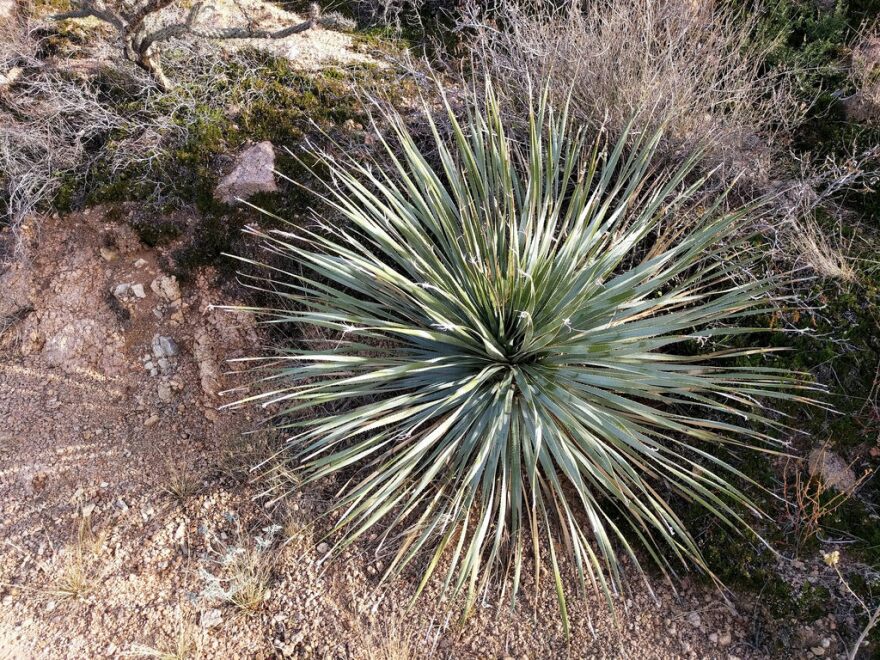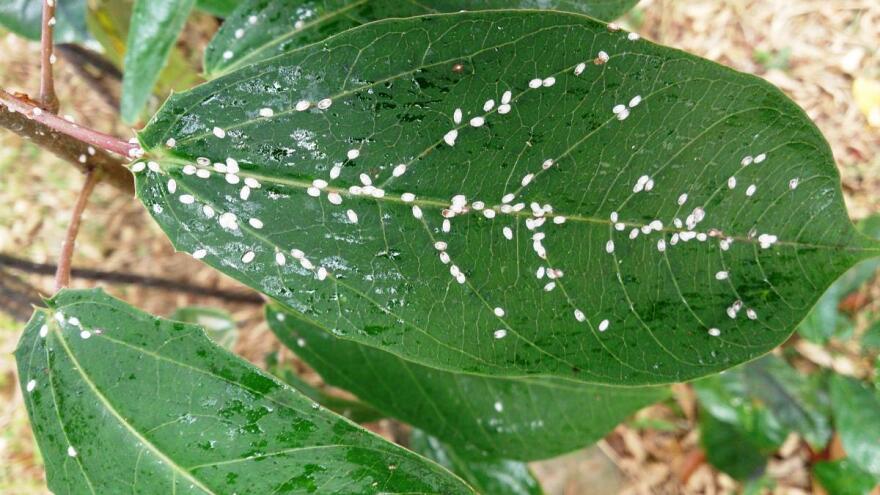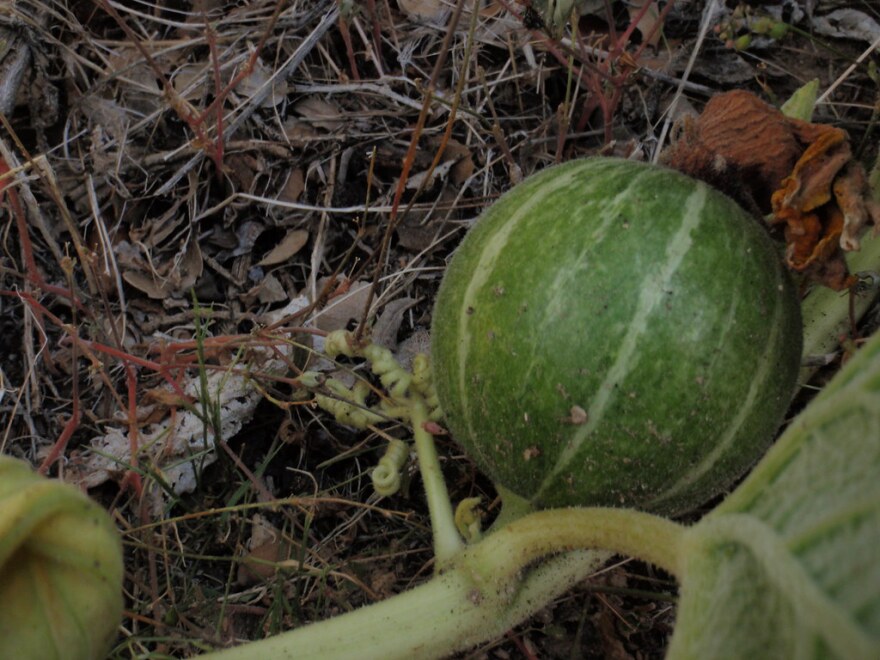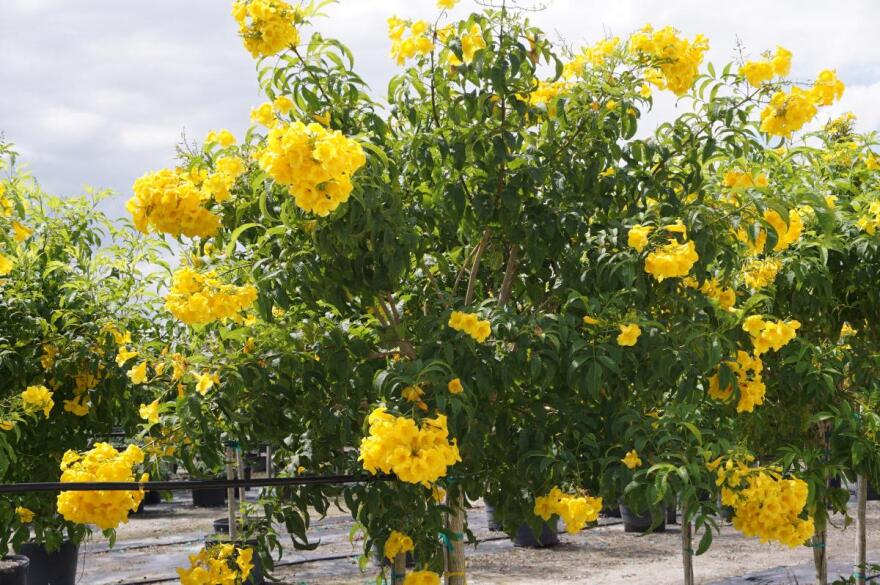The heat of summer is here. For gardeners, the Southern Nevada heat is of particular concern.
Co-hosts of Nevada Public Radio’s “Desert Bloom” series Angela O’Callaghan, a horticulturist at the University of Nevada Cooperative Extension and Norm Schilling, owner of Schilling Horticulture and a certified arborist, answer questions about keeping a garden green during the summer heat.
DISCUSSION HIGHLIGHTS:
Are there plants that can be ignored during summer?
Angela O'Callaghan: Desert plants or well-adapted plants really don’t need a whole lot of fussing. They need water occasionally. They need to be decent soil and the soil needs to be well-drained but they're pretty hardy.
Norm Schilling: Succulents, in particular, require little or no care. Desert spoon is a pretty commonly used, pretty big succulent. Giant sword flower I might spend a minute a year on that plant.
The key to gardening success I believe is put a plant where it wants to be, give it room to grow and then drink wine.
Desert Spoon
What do you do about your garden when you’re away on summer vacation?
Angela: It depends on the type of plants and if you trust your irrigation system. If you're growing plants that are little iffy, you always want to make sure that your soil is well amended with compost. That's like having a million little sponges, there is good drainage but you also have water.
How should your irrigation system be managed during the summer?
Angela: Every irrigation system has a clock so make sure to set the clock.
Summertime water guidelines from Southern Nevada Water Authority
Norm: It depends on your system. Drip systems are different than spray systems. Drip systems come out slower. Try to water desert plants deeply and infrequently. Also, most desert plants can go several weeks without water and they won't have a problem.
Skeeter from Overton wants to know how to deal with white scale on his mint plants.
Angela: When you're talking about white scale, you generally mean mealybugs. They can be tough to get rid of.
White scale/mealybugs
Norm: You can try a systemic insecticide but that means the plant takes it up into the stems and leaves and you can't use mint. Try pruning the plant to the ground or send a sample of the bugs to the Cooperative Extension. They can send it to the state entomologist.
Are there other summer pests that show up this time of year?
Angela: Squash bugs. The best way to get rid of them is to put duct tape around your hand with the sticky side out and rub that against and stick the bugs to it - it's disgusting. The other thing is using a wet-dry vac and vacuuming them off.
Norm: What she's talking about is cultural control. It's avoiding the use of pesticides. One of the things I've learned is the less I use pesticides the fewer the pest problems I have.
Another common pest around here all year round is aphids. It is the most common pest in the world. If you have a couple hundred aphids, it is generally not really a problem. The best thing to do is to just leave them alone and the predators will move in.
JJ from Pahrump didn’t plant them but a strange looking gourd is growing in his yard.
Angela: It sounds like a coyote melon which is an indigenous plant. You wouldn't want to eat it. Only coyotes eat them but they're not bad to look at.
Coyote Melon
What is a heat sink and how do shade trees help?
Norm: A heat sink like artificial grass or asphalt absorbs heat during the day then when the sun goes down the residual heat that has been absorbed radiates out. Bring in shade trees and you remove that heat source baking the asphalt or artificial turf and you're basically cooling your yard down.
What are some shade trees that you recommend?
Angela: Desert willow has become my go to plant. Mesquites have thorns but they will survive the heat and the winter.
Norm: The best shade tree for more moderate water use areas, it is not a true desert tree but it can be pretty drought tolerant, is Chinese pistache or a variety of it called the red push pistache... it's beautiful. it's dependable. It's tough.
Chinese pistache
Lance in Las Vegas wants to know how to take care of desert marigold?
Norm: Don't give it too much water. It is a native species so it only needs minimal irrigation. Make sure to deadhead it- that is - take the dead flowers off it.
Angela: But save some of the seeds and replant them in the yard.
Stephanie has amended the soil in her raised vegetable beds but the vegetables are growing slowly.
Angela: It sounds like you've amended the soil with a lot of nitrogen. On a bag of fertilizer, the first number is nitrogen. It feeds everything green in a plant like the leaves and stalks. If you want a plant to fruit make sure you don't use too much nitrogen.
Jeremy put a shade cloth over his garden and has seen improvement in many vegetables but bee activity has declined.
Norm: It may be that the bees aren’t seeing the flowers on the plants. Maybe what you can do is just modify your shade cloth so that it is covering some parts of the garden but not others or it's a thinner strip so it will allow more of the pollinators to see, 'hey, there's a garden with flowers here.'
What are some flowers to bring in color in the summer?
Norm: There are a lot of heat-loving, summer plants. There's tecoma. There are eight, 10, maybe 12 different varieties... they will start blooming as soon as it gets pretty warm... and then they'll continue blooming nonstop until October or November. Redbird of paradise is another one that will give a stunning show all summer.
Tecoma
Suzy wants to know the best place to put raised beds:
Angela: Shade in the afternoon is best. Try to make sure the plants get sun from around 6 or 7 a.m. to early afternoon. East to southeast light is ideal.
Norm: What works really, really well in veggie beds is inline drip irrigation. It's the black poly tubing that is usually underground but it has emitters built directly into the tubing. We like to lay the tubes one foot apart. You lay it through the bed nice straight line and then you have an emitter every foot.
Tell us about your pluots tree?
Angela: Pluot is an interspecific cross between a plum and an apricot. It is the most wonderful sweet, delicious, juicy - I call it a super plum. But it is an interspecific hybrid so it can't produce fruit without having pollen delivered from a different tree. This year I've been relying on my neighbor's purple-leaf plum.
Norm: Fruit trees can thrive here. The pomegranates and figs are really easy to grow here. But then the apricots, plums, peaches, almonds, nectarines, apples or pears can all do well here but use wood chip mulch and as they grow, add emitters to create a wide wetting pattern.
RESOURCES:
University of Nevada Cooperative Extension Clark County
University of Nevada Cooperative Extension Horticulture Program
Mountain States Wholesale Nursery
International Society of Arboriculture
UNR College of Agriculture, Biotechnology and Natural Resources
From Nevada Public Radio: Desert Bloom
Angela O'Callaghan, Horticulturist, University of Nevada Cooperative Extension; Norm Schilling, owner, Schilling Horticulture in Las Vegas














